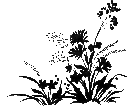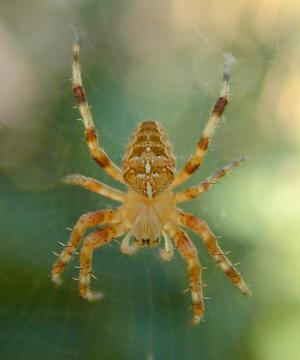 |
The Preserve |
News and Events |
Natural History |
The Trail |
Monitoring |
Restoration |
Library |
Organization |
|
Todmorden Mills Wildflower Preserve
|
Nature NotesYour nature guide for the week August 9-August 15Spiders
InsectsThe background hum of insects in the Preserve is not just one species but the calls of male cicadas, grasshoppers and crickets. Males of each species produce a characteristic song which the females of the same species recognize and respond to. With practise it is also possible for us to differentiate some of the common songsters. The Dogday Cicada gives the buzzing drone so characteristic of hot summer days, while perched high up in the trees. Katydids, a sluggish grasshopper with extremely long antennae, also have a buzzing call but only sing at night. Cricket song is more musical, and consists of trills. The Field Cricket sings during the day or at night. It calls from on or close to the ground and gives short, repeated trills usually described as chirps. Tree Crickets have a longer trill, and they are more active in the evening. They will call from shrubs and tall wildflowers such as Goldenrod. WildflowersA detour off the main trail, south from the apple trees, is worth it to see the Turtleheads flowering. The large white blooms are arranged on tall spikes which poke out through the cattail marsh. Named for the swollen-lobed flowers which resemble the head of a tortoise, the species is the key host plant for caterpillars of the Baltimore butterfly, a rare species in Toronto. These plants are remnants of the original flora, and probably persisted here because they inhabit wetter ground which was left undisturbed. In the woodland, Zig-zag Goldenrod has started blooming. The flowers, arranged up a stem which kinks slightly back and forth, open from the top first--the opposite sequence to most plants. BirdsMost birds replace their feathers completely in late summer after they have finished breeding. Starlings have just begun their moult, and are starting to sport fresh black feathers tipped with white spots. Said to resemble a starry sky (starling means "little stars"), the plumage gradually wears through winter and by the spring the white tips have disappeared and the black iridescent breeding plumage is revealed. FrogsMale Green Frogs continue to call from the margins of the pond. Green Frogs have the most protracted breeding season of the frogs in Toronto. This summer's tadpoles will not transform into frogs until next spring. Nature Notes is researched and written by Mike Dennison and Alejandro Lynch, and is published each week by Hopscotch Interactive (www.hopscotch.ca). In addition to this online version, Nature Notes is available as a print-friendly PDF and as a text-only email version. Please contact Mike Dennison to receive these, or for more info (tel: 416-696-7230, email: dennison@hopscotch.ca). |
| Copyright © 2003-2004 Todmorden Mills Wildflower Preserve |
